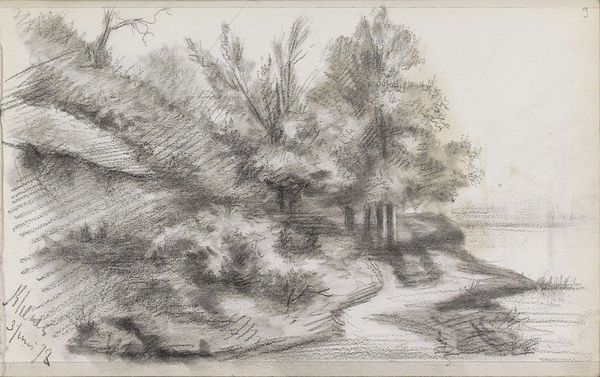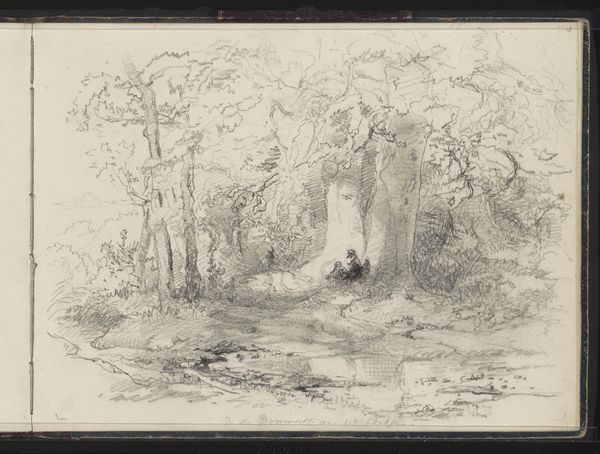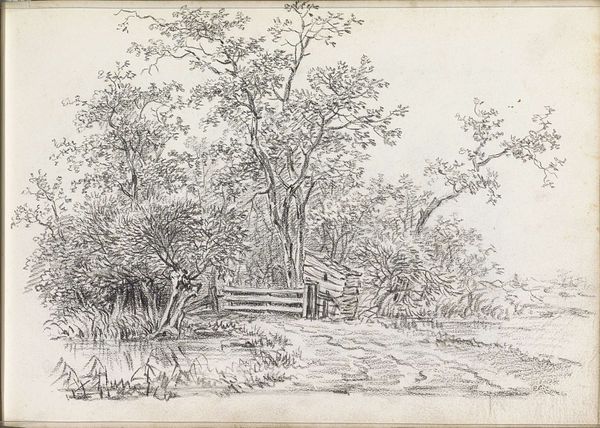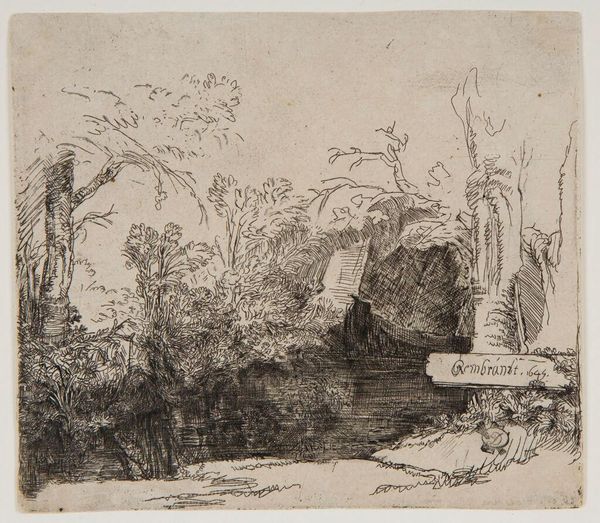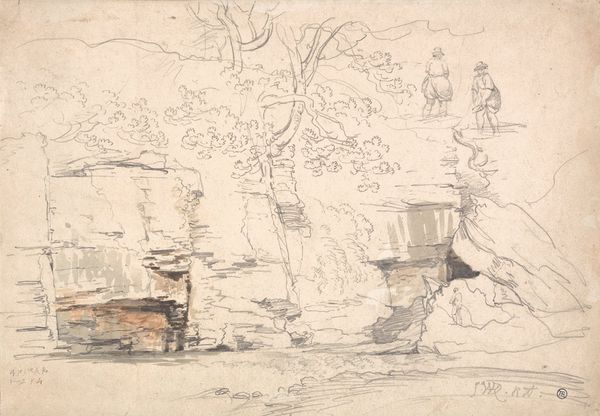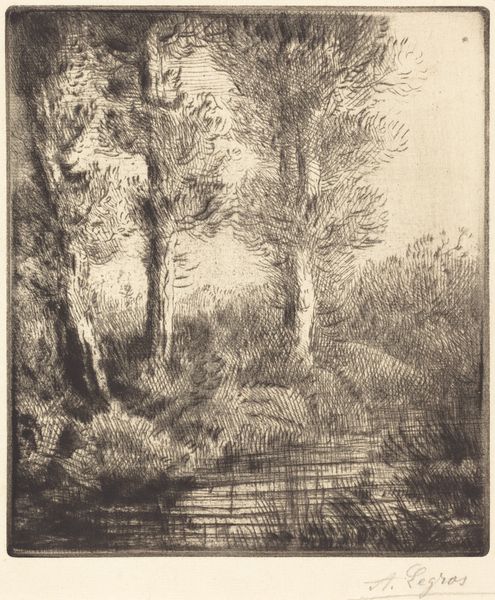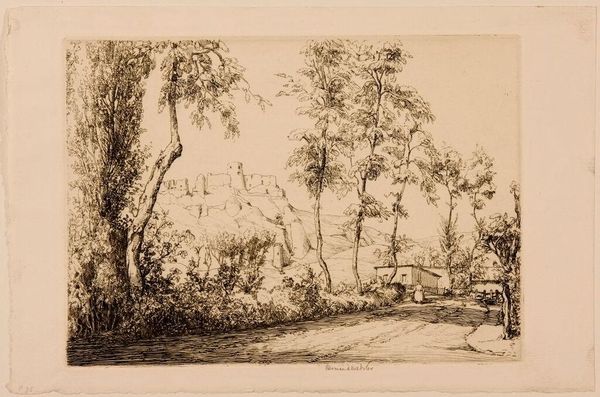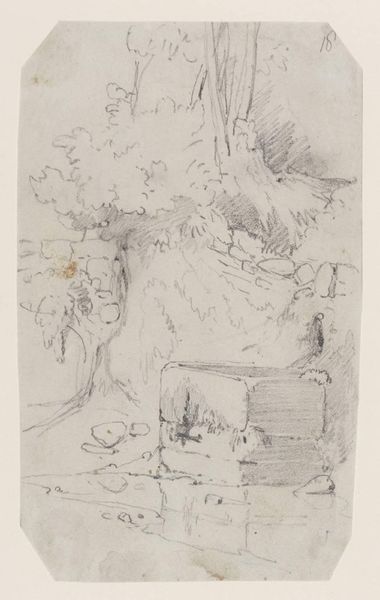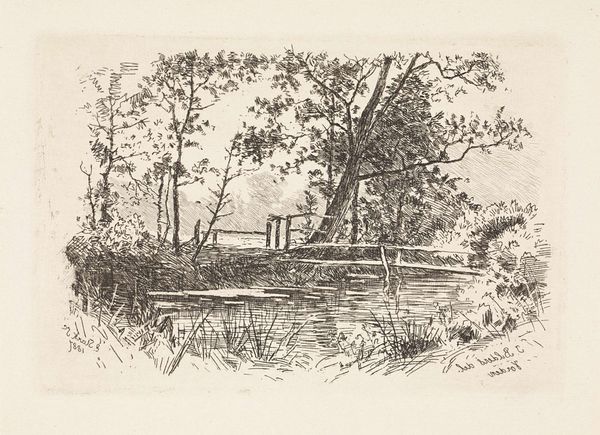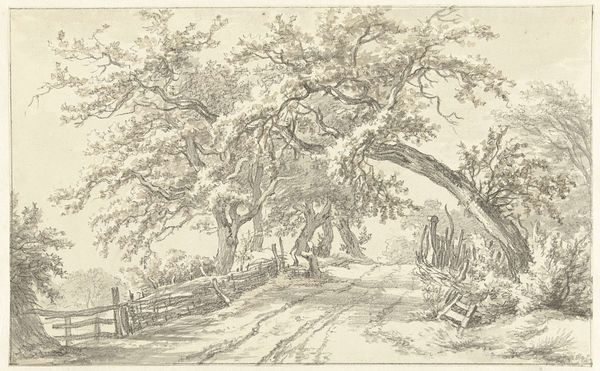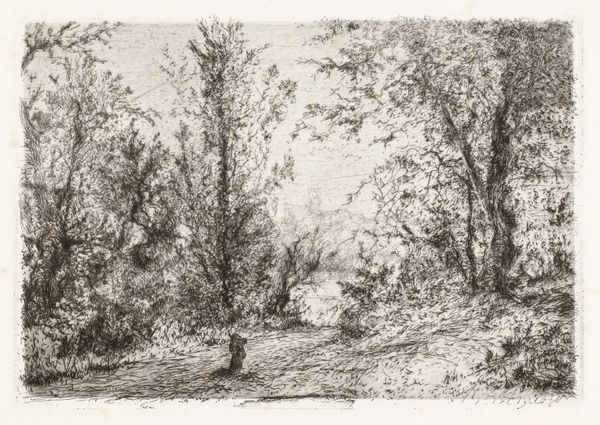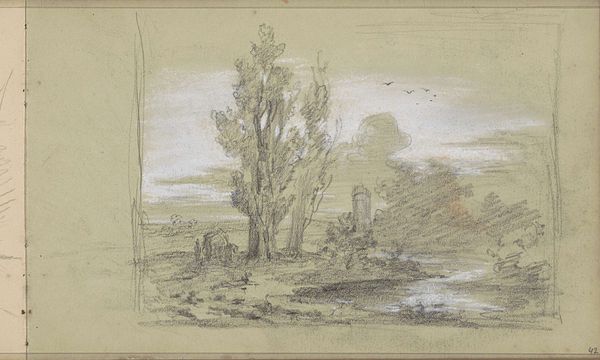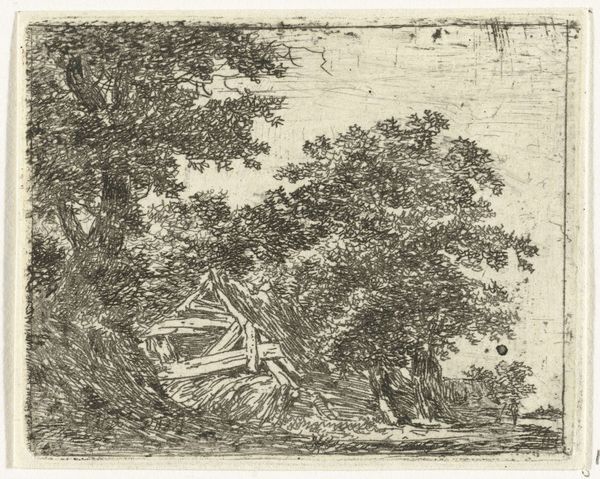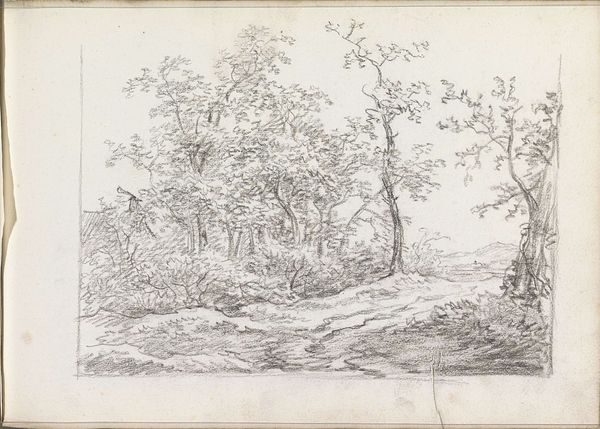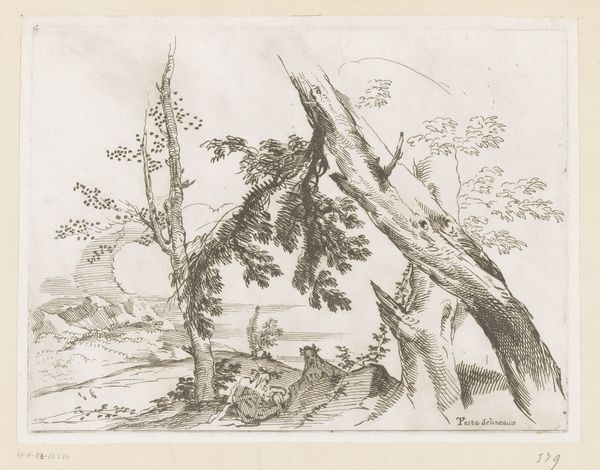
drawing, paper, pencil
#
tree
#
drawing
#
pencil sketch
#
landscape
#
figuration
#
paper
#
plant
#
sketch
#
romanticism
#
pencil
Dimensions: 19.6 x 24.2 cm
Copyright: Public domain
Curator: Let's turn our attention to "Landscape with a Well," a pencil drawing crafted around 1810 by Orest Kiprensky. It exemplifies the romantic era, which flourished amidst significant shifts in European power dynamics. Editor: My immediate impression is of tranquility. The delicate pencil work creates a soft, almost dreamlike quality. It feels less like a precise depiction and more like a fleeting impression, a moment captured in time. Curator: Exactly! The romantic spirit valued emotion and the sublime power of nature. Kiprensky situates the well not merely as a functional object, but as an integrated part of a harmonious, idealized rural scene. Note the figure on the right of the drawing, this accentuates the connection between humanity and nature. Editor: Yes, and the rough-hewn texture of the well, rendered so deftly in pencil, hints at the labor required to build and maintain such a structure. I find myself pondering who drew water from it, and what that simple act meant in their daily lives. This element makes one consider its utility to a working community, which can then tell us a story about societal need. Curator: That's a valuable observation. We might also consider the art market and how this drawing would have been viewed in its day. Kiprensky established himself as a prominent portraitist of his time and he moved within circles of high society. How would the elite, the aristocratic patronage circles have interpreted his drawings and how did that then lend value to his art? Editor: Certainly, the romantic movement was steeped in complex social factors. It’s interesting how seemingly simple subjects—like this well—were consumed as signifiers for class, taste and philosophical value. The means to have one's likeness portrayed was still something attributed to those of a high societal standing. How did images like these circulate at the time? Curator: Often through exhibitions and private viewings, circulated among the chattering classes as a way of showing social standing or access to important artworks of the time. It reinforced status, demonstrating their ability to engage with 'refined' themes. Editor: Fascinating. It gives me pause to consider all that labour and material input when approaching art. It makes you think beyond surface impressions to ask how things came to be. Curator: Indeed, appreciating the layered history woven into the work truly enhances the viewer’s experience. Editor: Absolutely, digging deeper into the materials, construction and history can truly add to the overall feeling while taking in such an artwork.
Comments
No comments
Be the first to comment and join the conversation on the ultimate creative platform.
